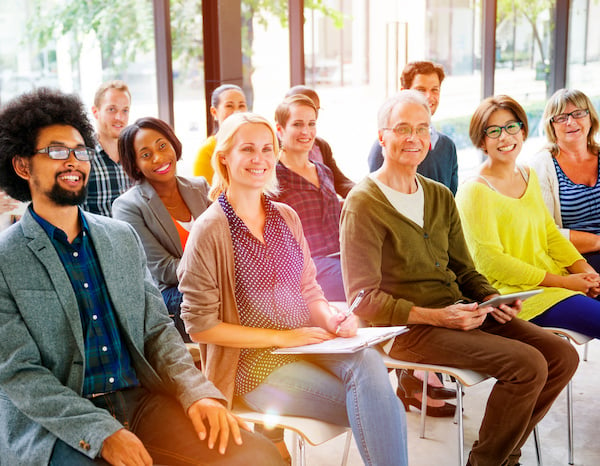Published on
Supporting Lifelong Learning at All Ages

Lifelong learning, as many higher ed leaders know, extends beyond the traditional 18- to 22-year-to age demographics as high as 80 and older. It’s important to note that lifelong learning can touch people of all ages, and no one should be left behind. In this interview, Sherry Scamardo and Clair Robertson discuss the importance of lifelong learning, how to engage with your community and how to deliver this lifelong learning model across the institution.
The EvoLLLution (Evo): Why is it important for higher ed leaders to focus on lifelong learning?
Sherry Scamardo (SS): We stand behind and support our commitment, which is teaching to students of all ages, whether it’s a young student working toward a credit degree, a noncredit student or a lifelong learner. Our leadership at Collin College has supported the SAIL program, which serves adults aged 55 and over, since 1996. So, it has a long-running presence at the college.
Clair Robertson (CR): The program is a great way to give back to the community and to support our community elders, especially those who are homebound. We have a lot of the former professors as well, so everyone is engaged, active and learning.
Evo: What are some challenges to delivering lifelong learning?
SS: The challenges we have are good challenges. In my position as director, it’s sometimes a challenge to have new courses every semester. We don’t repeat anything, so how do we find something new and fresh for our lifelong learners? These learners come from diverse backgrounds are of all ages, so we try to offer courses each semester that challenge and keep them engaged.
The other challenge is finding the balance between on-campus, online or hybrid learning. We’re able to have more guest speakers from all over the globe.
CR: Sometimes it comes down to technical challenges in terms of using things like Zoom. For example, we had one of those moments where we were cut off after 40 minutes, so it was a challenge to get everyone back on. In terms of content and courses, it’s great that we get to explore so many various topics I don’t typically teach in the traditional classroom. But my biggest challenge there is keeping courses compact and short within the class timeslots.
Evo: Can you describe the relationship between the SAIL program leaders, the credit side and leadership?
SS: The college understands that our community of lifelong learners is an important part of the big picture and learning never stops! Sharing their talents a way for faculty to give back to the community and showcase what they bring to the table. Faculty have shared that they take the experiences of their older students back to the younger students, which is a win for both.
Evo: How is Collin College working toward delivering lifelong learning to its community?
SS: Great communication with our current lifelong learners is important, as is engaging potential community lifelong learning students. We bring guest speakers in to speak to our current SAIL students and we periodically have lecturers for community groups and some of our senior centers. The pandemic gave us the opportunity to deliver quality classes online and stay in touch with our SAIL students. While the majority of SAIL lifelong learners enjoy attending a class in person, we are now able to engage our homebound students.
CR: The ability to do both face-to-face and online learning is important. With the online environment, we’re able to connect with the homebound community. I love the idea of being able to connect with them through Zoom and foster those relationships with various students. You learn so much from these learners and their experiences.
Evo: What impact does the SAIL program have on the institution and its community?
SS: Collin College’s vision statement is: “Delivering a brighter future for our students and communities,” and due to the SAIL program’s longevity, it has had many positive impacts. We have lifelong learners who not only take SAIL classes but enroll in Continuing Education and credit classes, which provides an intergenerational connection with students. Our community of SAIL learners sets the example that learning never stops!
CR: One of the biggest impacts is being active in the community and letting everyone know what’s available. There are many extensions from that engagement, including students attending more events or places based on classes—for example, art museums and galleries. I love that it’s encouraging them to be more active within the community itself.
This interview was edited for length and clarity.
Author Perspective: Administrator



